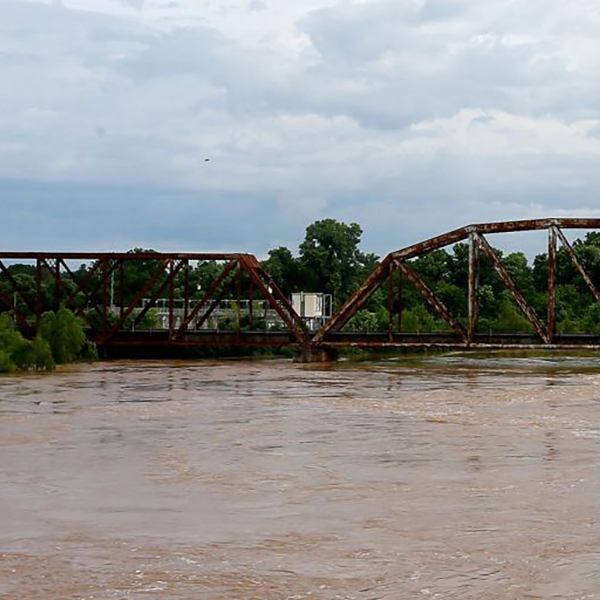New Global Water Map Could Predict Flood Events
Texas A&M Geography’s Dr. George Allen helped develop the MERIT Hydro global map, using complex algorithms to determine the shape of millions of Earth’s rivers, lakes and canals.
Jul 30, 2019


A Texas A&M University geography professor is part of a team that has produced what could be the most accurate global map of freshwater hydrography ever made – so precise that it could be used to predict future flooding events across the world.
Dr. George Allen, an assistant professor in the Department of Geography at Texas A&M, and colleagues have had their work published in Water Resources Research.
The team created the new global map, called MERIT Hydro, which used complex computer algorithms to determine the shape of millions of Earth’s rivers, lakes and canals. MERIT Hydro also provides a hydrologically-consistent map of Earth’s topography. The team was led by Dr. Dai Yamazaki at the University of Tokyo.
“We believe this map is the most accurate representation of Earth’s hydrography to date,” Allen said. “It is the new state-of-the-art base layer dataset for hydrologic applications. As Earth’s climate changes, we expect that the intensity of rainfall events will change as well. To be able to translate predicted changes in global rainfall intensity to global changes of flood hazard, hydrologists need highly accurate maps of Earth’s land elevation and hydrologic features.”
Researchers say the new maps are so advanced that they could be used to predict which rivers are most likely to flood during heavy rainfall events.
“Hydrologic models use maps of topography to predict how water flows across Earth’s surface,” Allen said. “These models route rainfall from hillsides into channels and then estimate the volume of water flowing in rivers. The key to predicting this downstream flow is our ability to accurately represent the paths that water will take on its way to the ocean. MERIT Hydro provides us with a high-fidelity representation of the flow paths of water and so it improves our ability to predict the timing and magnitude of river flow, including floods.”
The new map, Allen added, will help researchers better predict where floods will overtop river channel banks and the extent that floods will inundate surrounding areas. Allen said it will also be useful for the reinsurance industry, which provides insurance for insurance companies, and thus are interested in estimating large-scale flood risks.
Allen said that the MERIT Hydro map could also be useful in other ways because it can be used to simulate river flow on a global scale, such as understanding several important biogeochemical processes that release significant amounts greenhouse gasses to the atmosphere. He noted that scientists, including himself, are working on estimating the seasonal variations of greenhouse gas emission from inland waters using MERIT Hydro.
Allen said the new global dataset is the next step in advanced mapping techniques.
“While raw digital elevation maps can be used to estimate where water bodies are located, satellite imagery of water bodies and crowd-sourced maps contain information about the actual location of rivers, lakes and canals,” he said. “We can use satellite imagery to correct the maps of elevation. For example, small errors in a digital elevation model may cause a river’s course to deviate hundreds of kilometers in the wrong direction. But satellite imagery will show the actual location of the river. MERIT Hydro uses the measured location of the rivers, lakes, and canals to automatically correct its map of topography.”
By Keith Randall, Texas A&M University Division of Marketing & Communications

